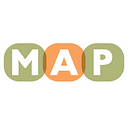MAP RESEARCH
The 2020 National LGBTQI Movement Report
There’s no doubt that lesbian, gay, bisexual, transgender, queer, and intersex (LGBTQI) communities have faced ongoing attacks in recent years. Despite these challenges, an annual analysis finds that national LGBTQI organizations remained steadfast in providing vital programs and services with support from diverse revenue sources.
The 2020 National LGBTQI Movement Report (NMR), published annually by the Movement Advancement Project (MAP), provides a comprehensive and standardized look at fiscal year 2019 for 39 major LGBTQI advocacy organizations. The annual report outlines financial health and other key indicators of stability. The report also examines the racial diversity at the staff and board level, along with demographic data based on gender and sexual orientation.
It is important to note that this report focuses on fiscal year 2019 and does not detail the impact of the COVID-19 pandemic. However, in November 2020, MAP conducted a survey of leading LGBTQI organizations, many of whom were also NMR participants, regarding the initial financial impacts of COVID-19.
The organizations reported total combined 2019 revenue of $294.4 million, exceeding combined 2019 expenses ($283.9 million) by nearly $10.5 million. The majority of 2019 expenses (77%) were spent on programs and services, indicating that the largest LGBTQI social justice organizations not only provide critically important programs and services, but that they do so efficiently, even exceeding Better Business Bureau benchmarks for nonprofits.
Major findings from the report include:
- Over the past five years, total revenue has increased 44% from 2015 to 2019. Excluding in-kind revenue, organizations reported an aggregate 3% revenue increase from 2018 to 2019. Aggregate revenue including in-kind revenue was up 1% for the same period.
- Over the past five years, total expenses increased by 42% from 2015 to 2019, demonstrating growth in programs and services. Total combined 2019 expenses (including in-kind) across all participating organizations were $283.9 million–up 8% from 2018, meaning an ongoing investment in programs and services.
- Individual donations remain the largest share of revenue among participating LGBTQI organizations, comprising 37% of their total 2019 revenue.
- Based on the number of donors to participating organizations (assuming that all donors are LGBT and there are no duplicates) and the total number of LGBT adults in the United States, only 4.2% of LGBT people donated to these leading LGBTQI advocacy organizations in 2019.
The report provides a snapshot of racial diversity at participating LGBTQI organizations in 2019:
- Organizations that reported staff demographics have racially diverse staff, with 47% of all staff and 46% of all senior staff being people color.
- Fifteen percent of staff are Black or African American, while 14% are Hispanic or Latinx, 8% are Asian or Pacific Islander (API), 5% are multi-racial, 0.5% are Native American, and 4% identify as some other race or ethnicity.
- Compared to the national population, LGBTQI organizations employ more Black and API people, but employ fewer Hispanic/Latinx and Native American people.
The report also provides a snapshot of demographic data for sexual orientation and gender at participating LGBTQI organizations in 2019:
- Of organizations providing data on the sexual orientation of their staff, 88% of all staff and 90% of senior staff are LGBTQ+.
- Among all staff, 45% are gay or lesbian, 11% are bisexual, 16% are queer, 5% are asexual, 11% are another (non-heterosexual) orientation, and 12% are heterosexual.
- Nearly half (48%) of all staff identify as women, 38% as men, 5% as nonbinary, and 8% as gender queer or another gender identity.
- Overall, 15% of staff and 14% of senior staff identify as transgender.
Among the 26 NMR organizations that also participated in a November 2020 survey about the financial impacts of COVID-19:
- Nearly three in five (58%) revised their 2020 budgets as a direct result of the pandemic. Organizations that revised their budgets reported a 12% decrease in their combined budgets, or an average $494,300 decrease per organization. Across all 26 organizations, this amounted to a 7% decrease in collective budgets.
- Nearly all (92%) organizations applied for Paycheck Protection Program (PPP) loans, totaling over $14.1 million in support.
- When asked about top COVID-related risks facing their organization in 2021, organizations most frequently identified financial and fundraising concerns, highlighting the clear need for continued and sustained support of these leading LGBTQI organizations.
Read the report and access the full findings.
As the political landscapes for LGBTQI equality vary from year to year, tracking these trends annually will be crucial for understanding the financial health and stability of the movement.
